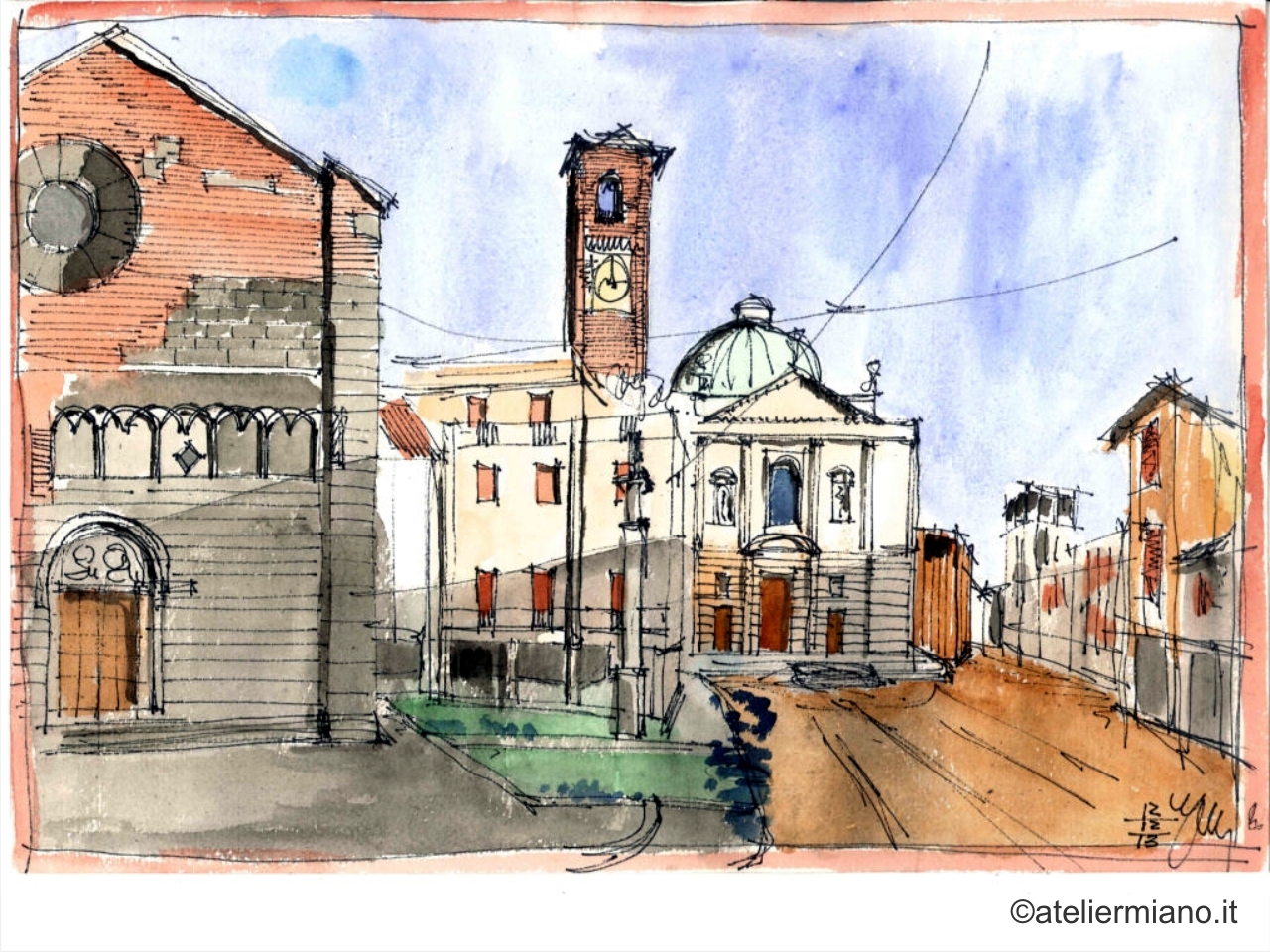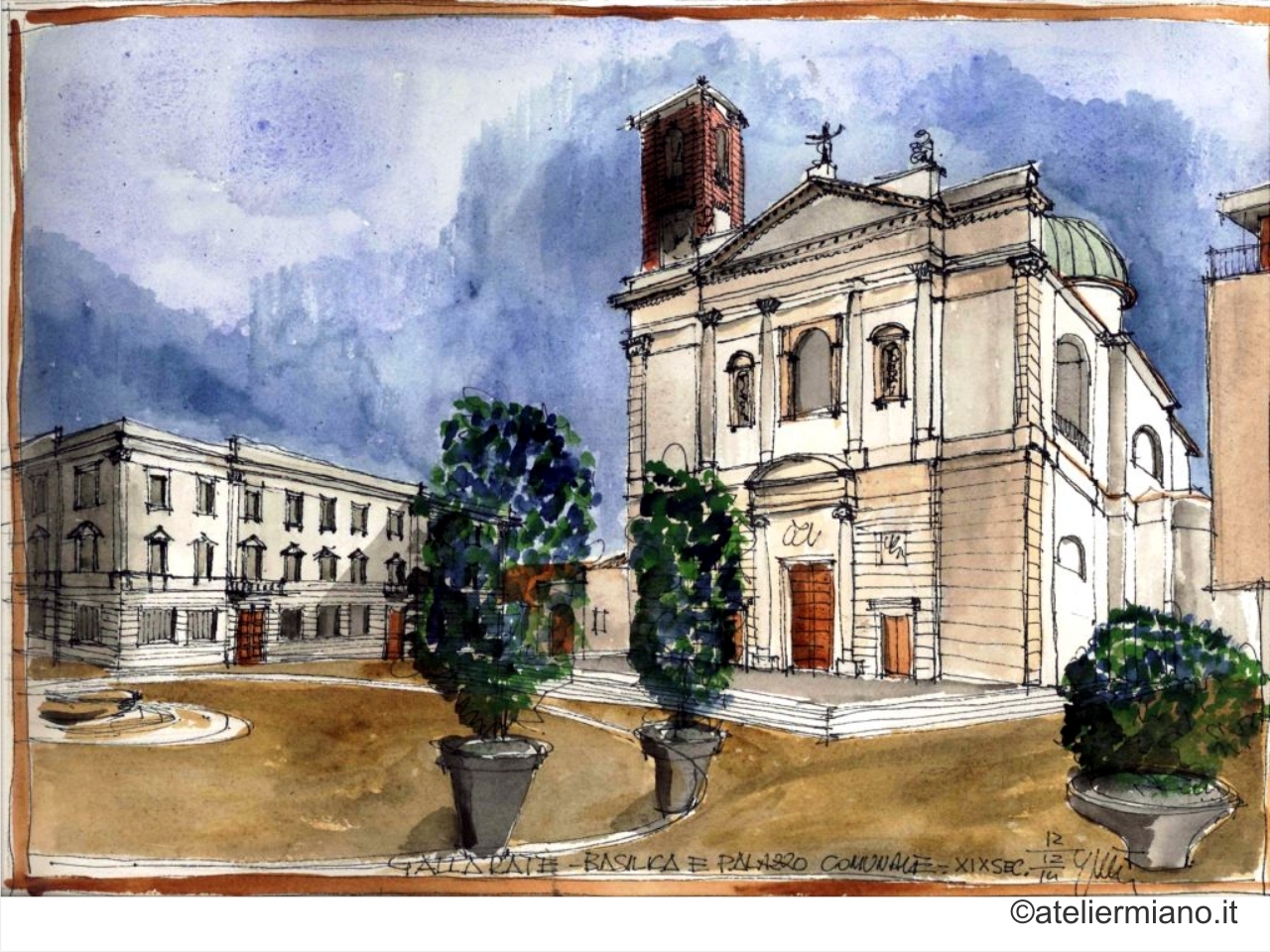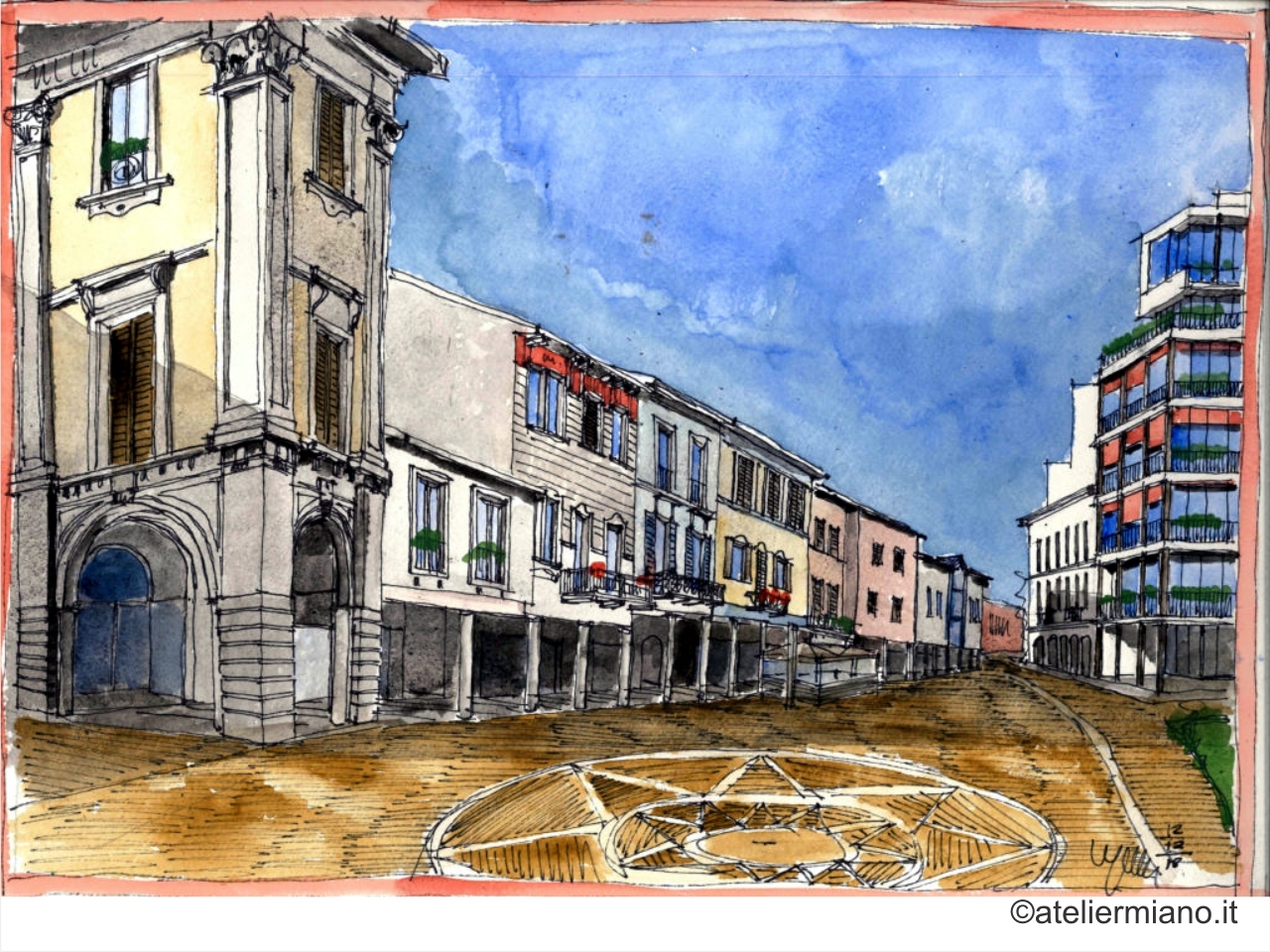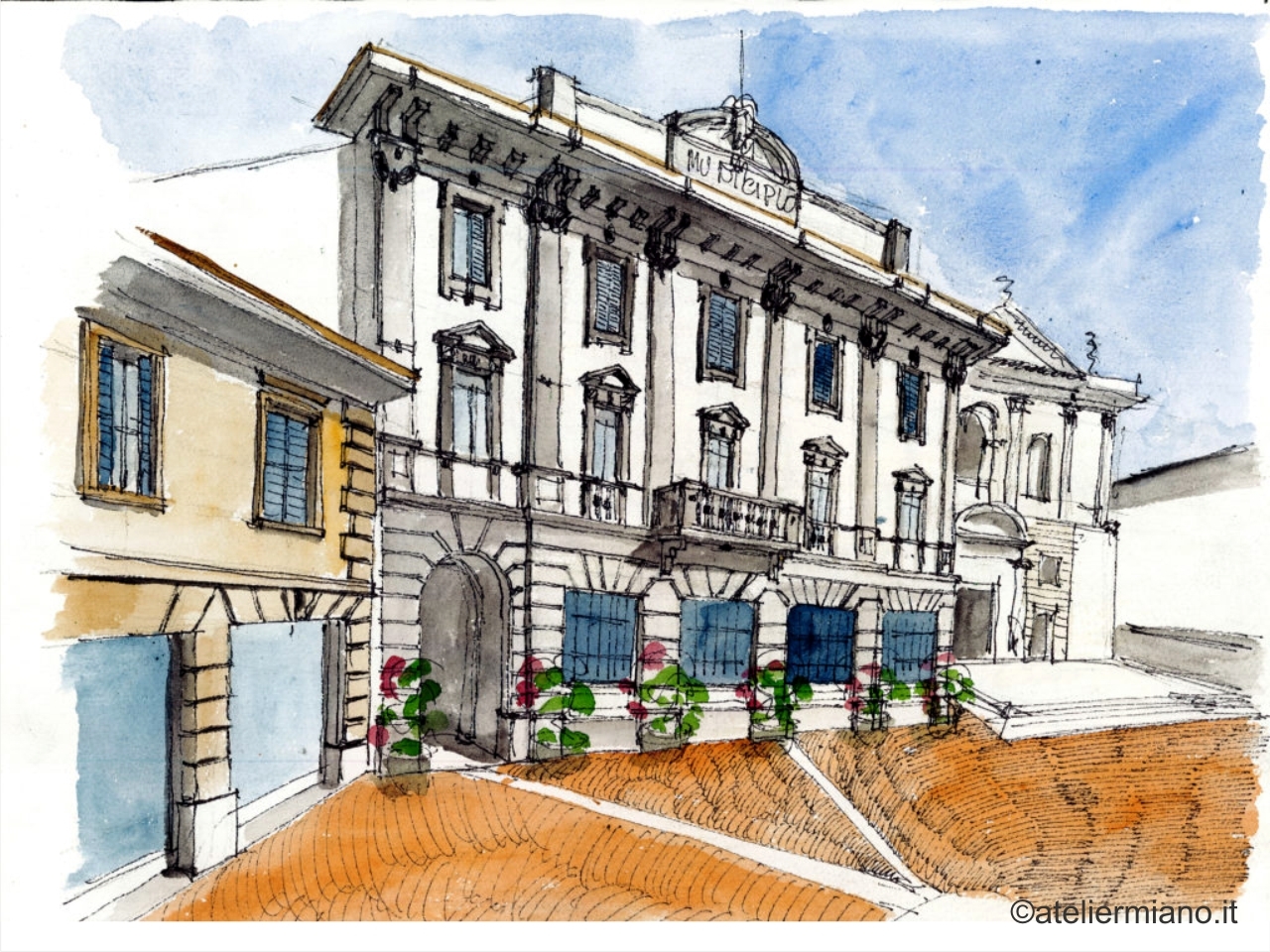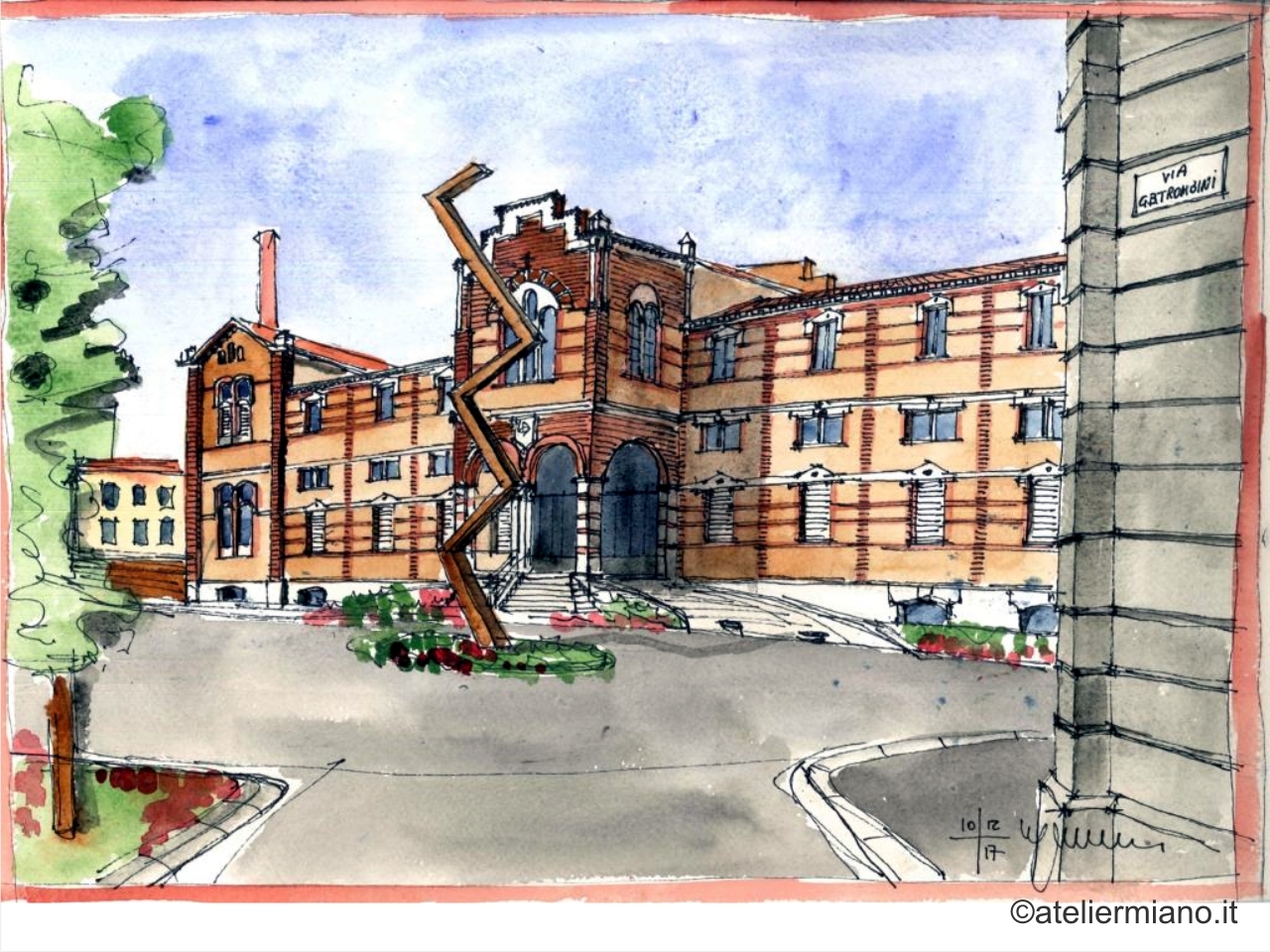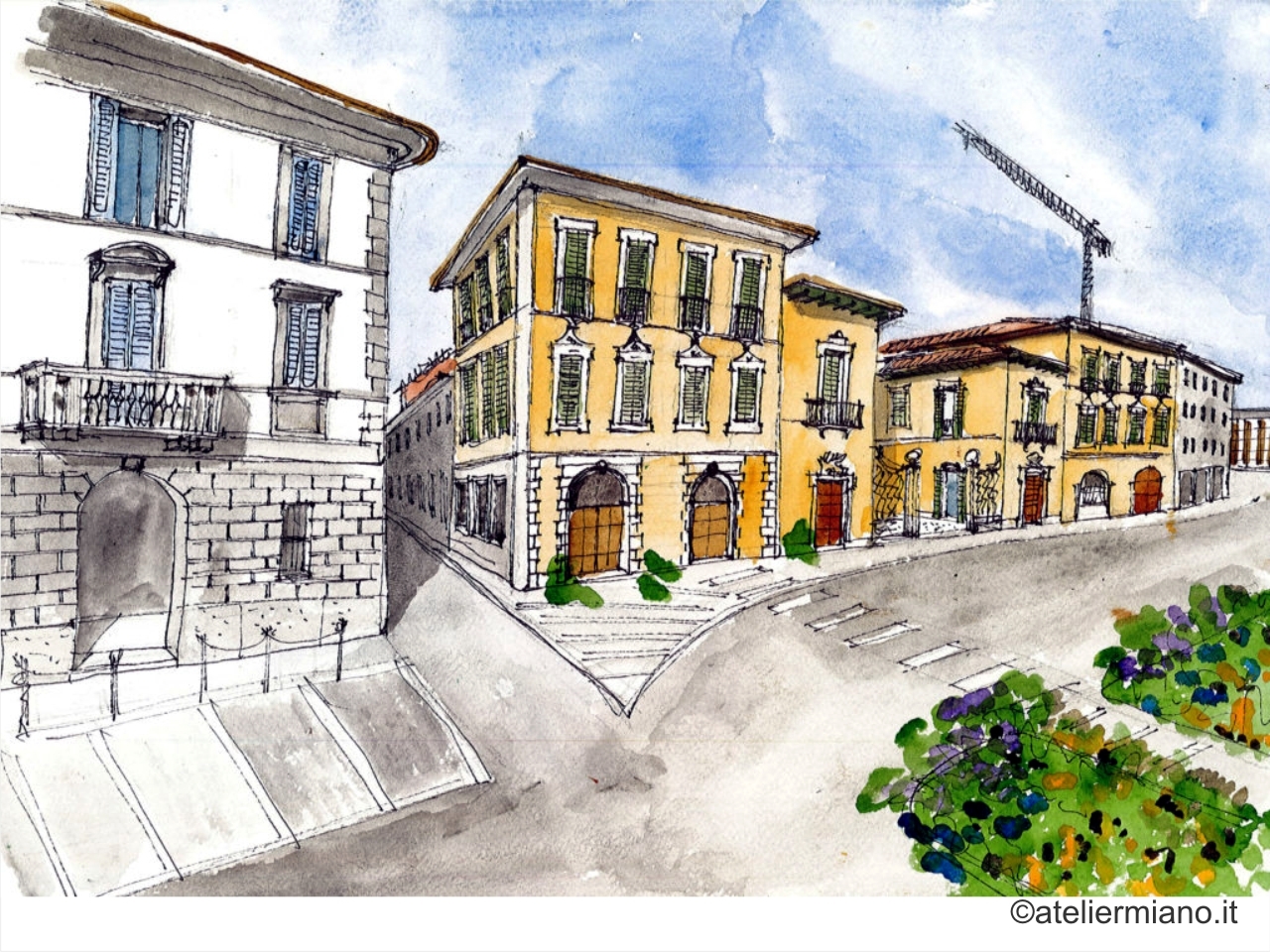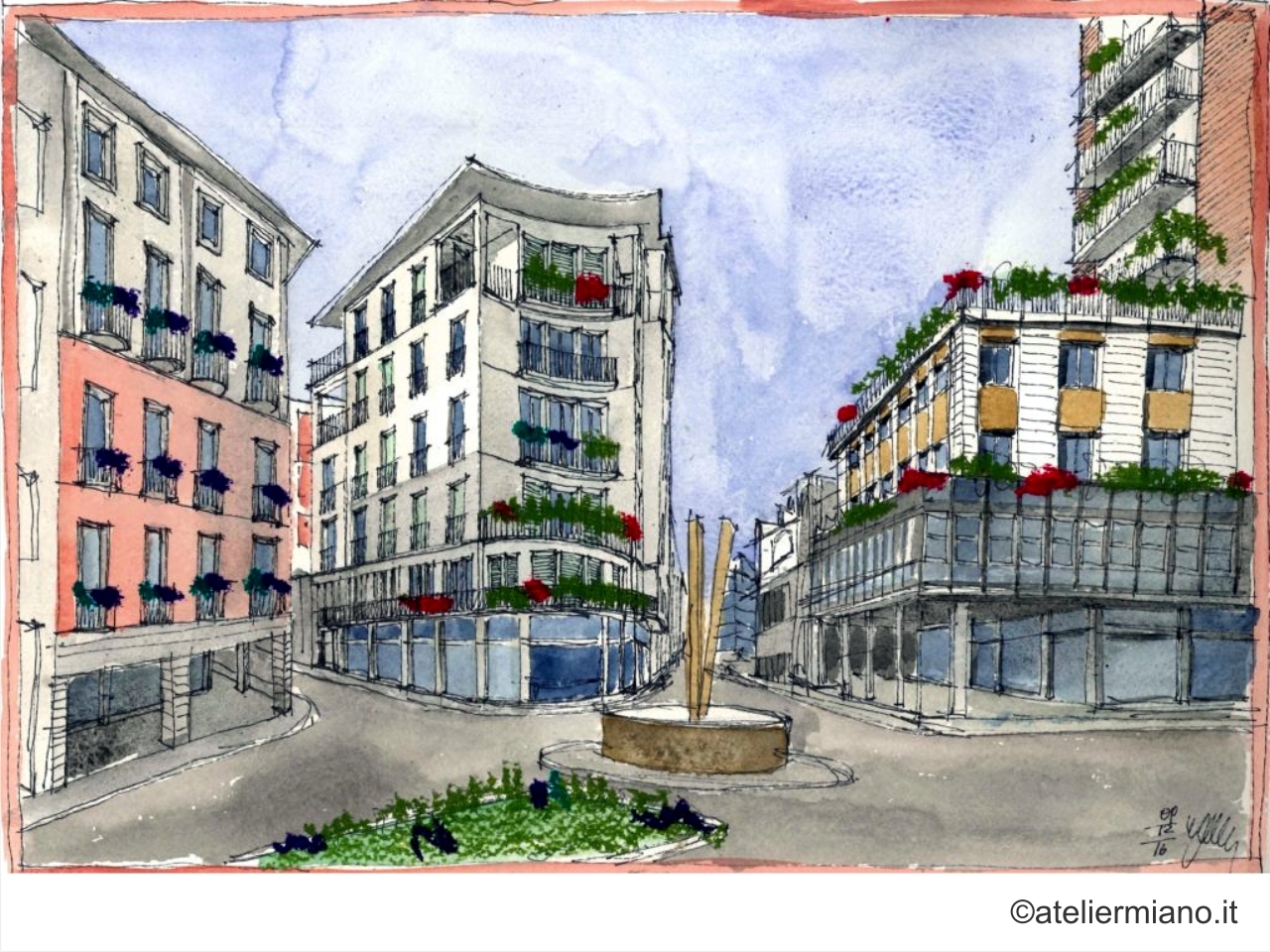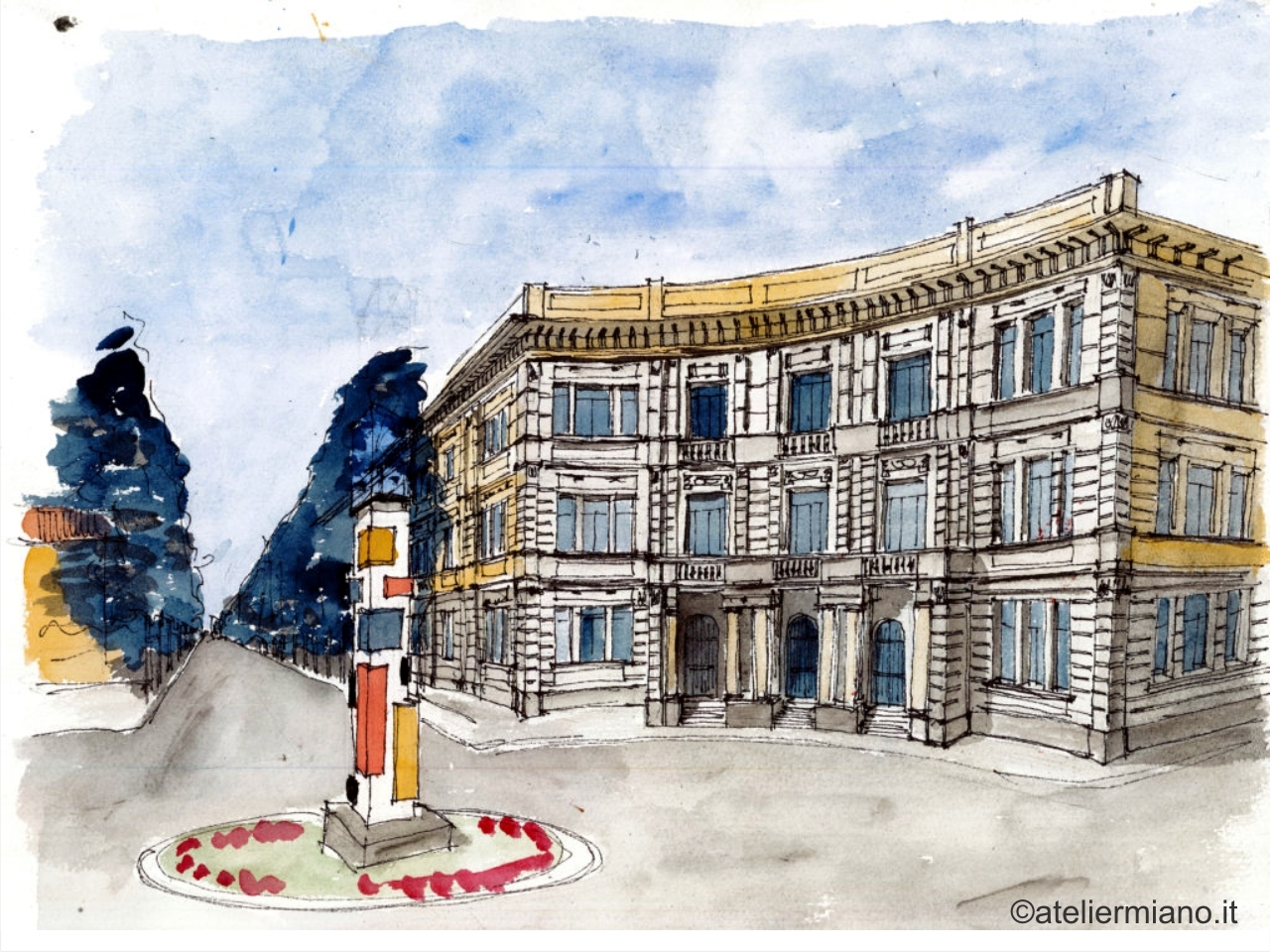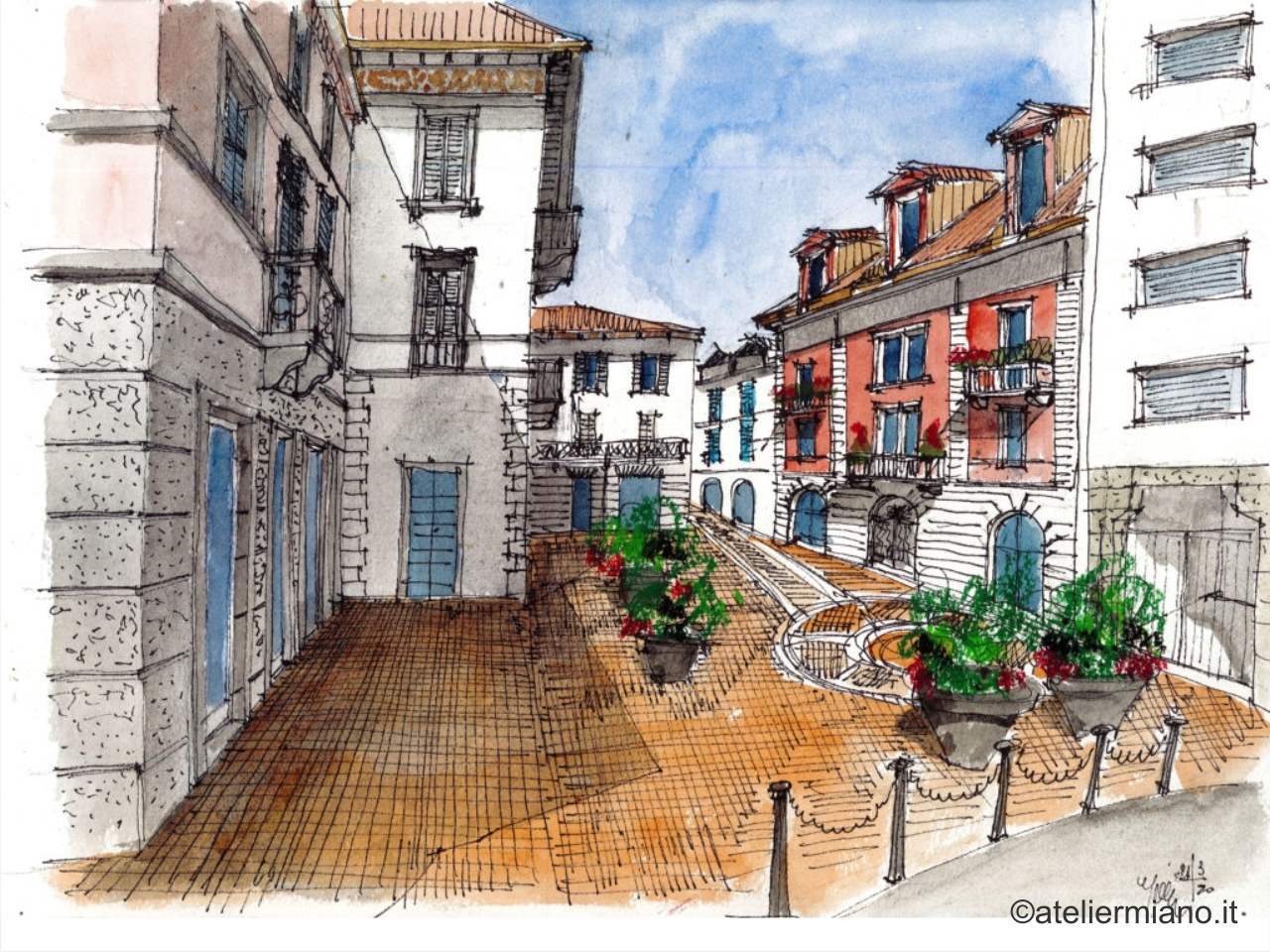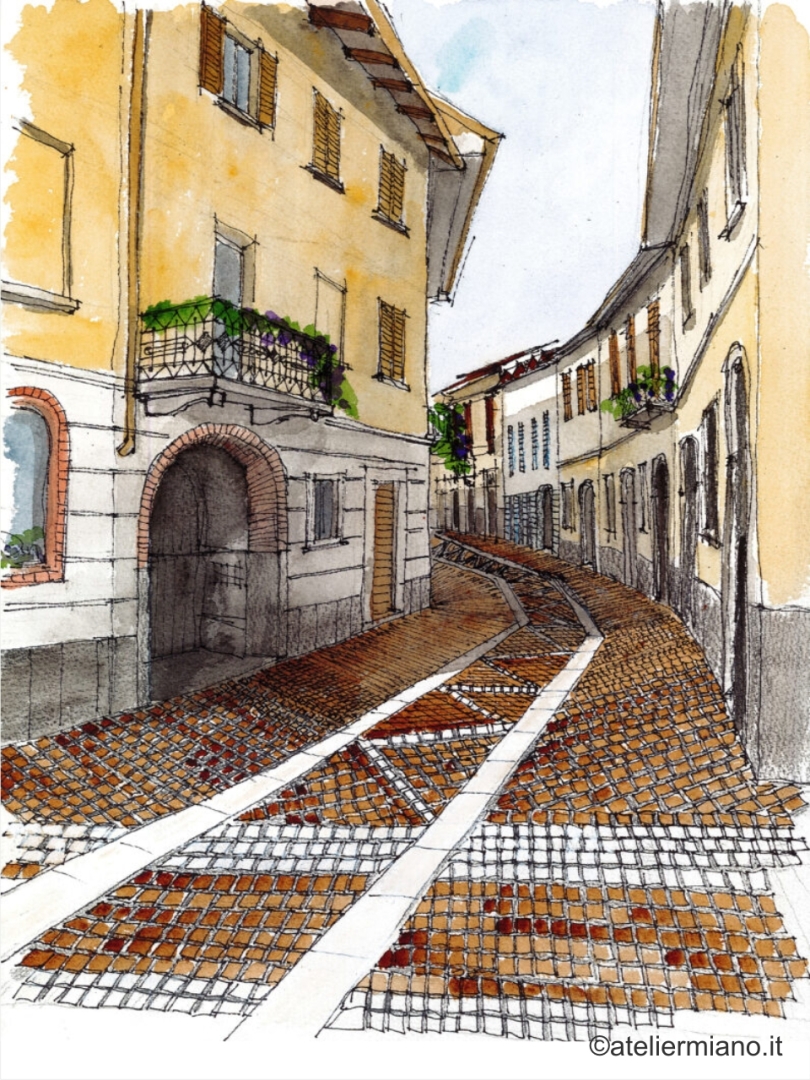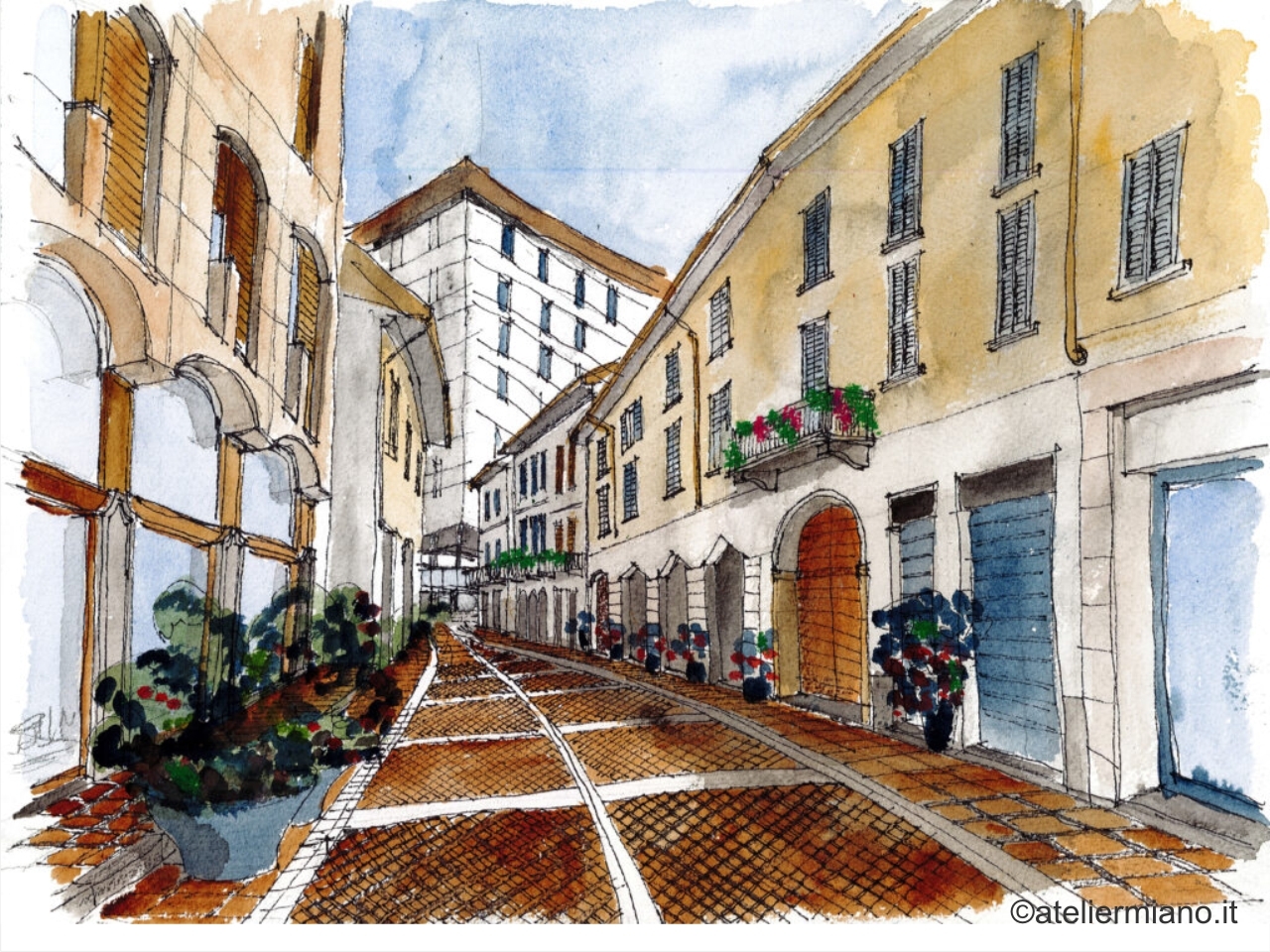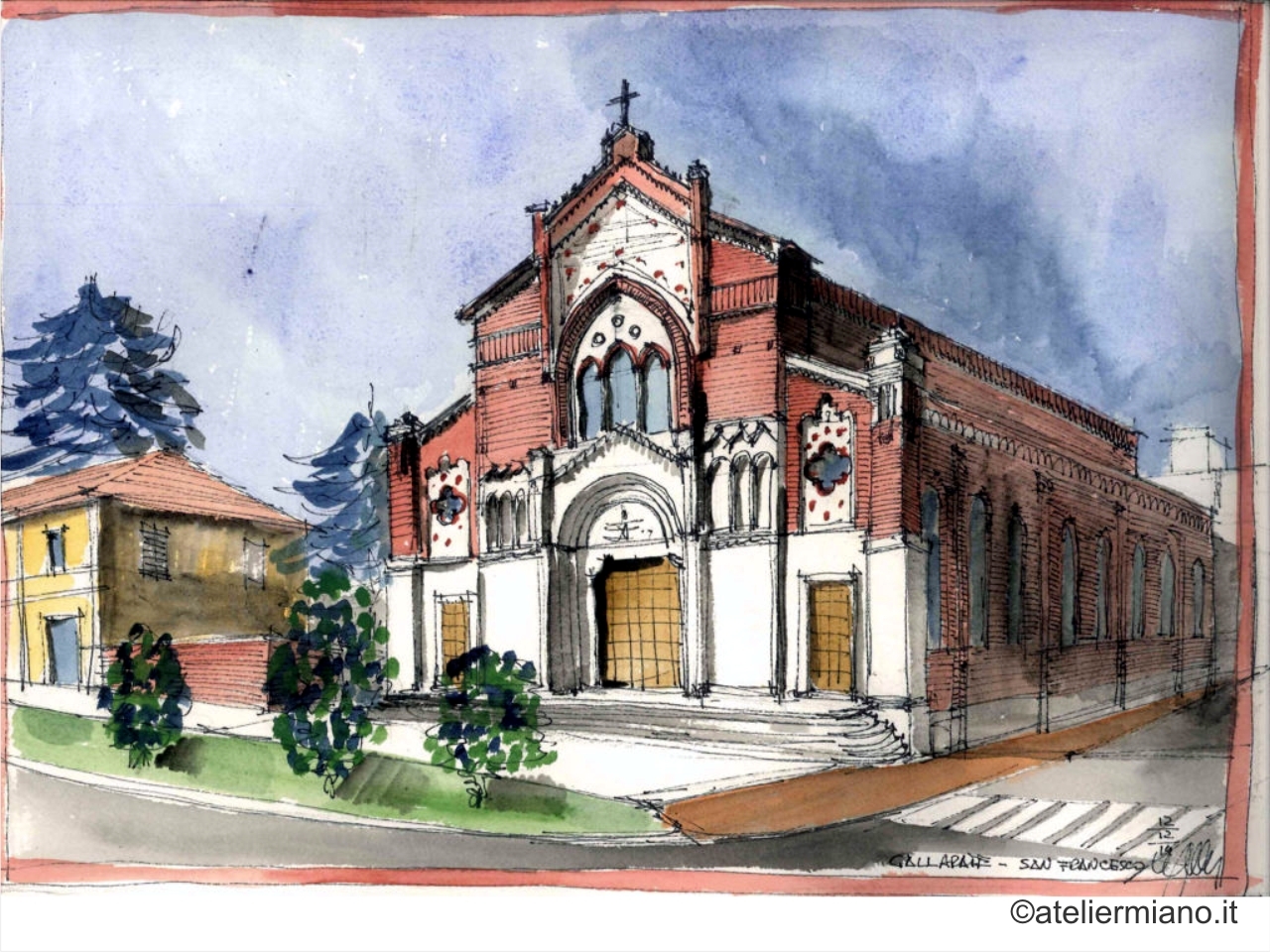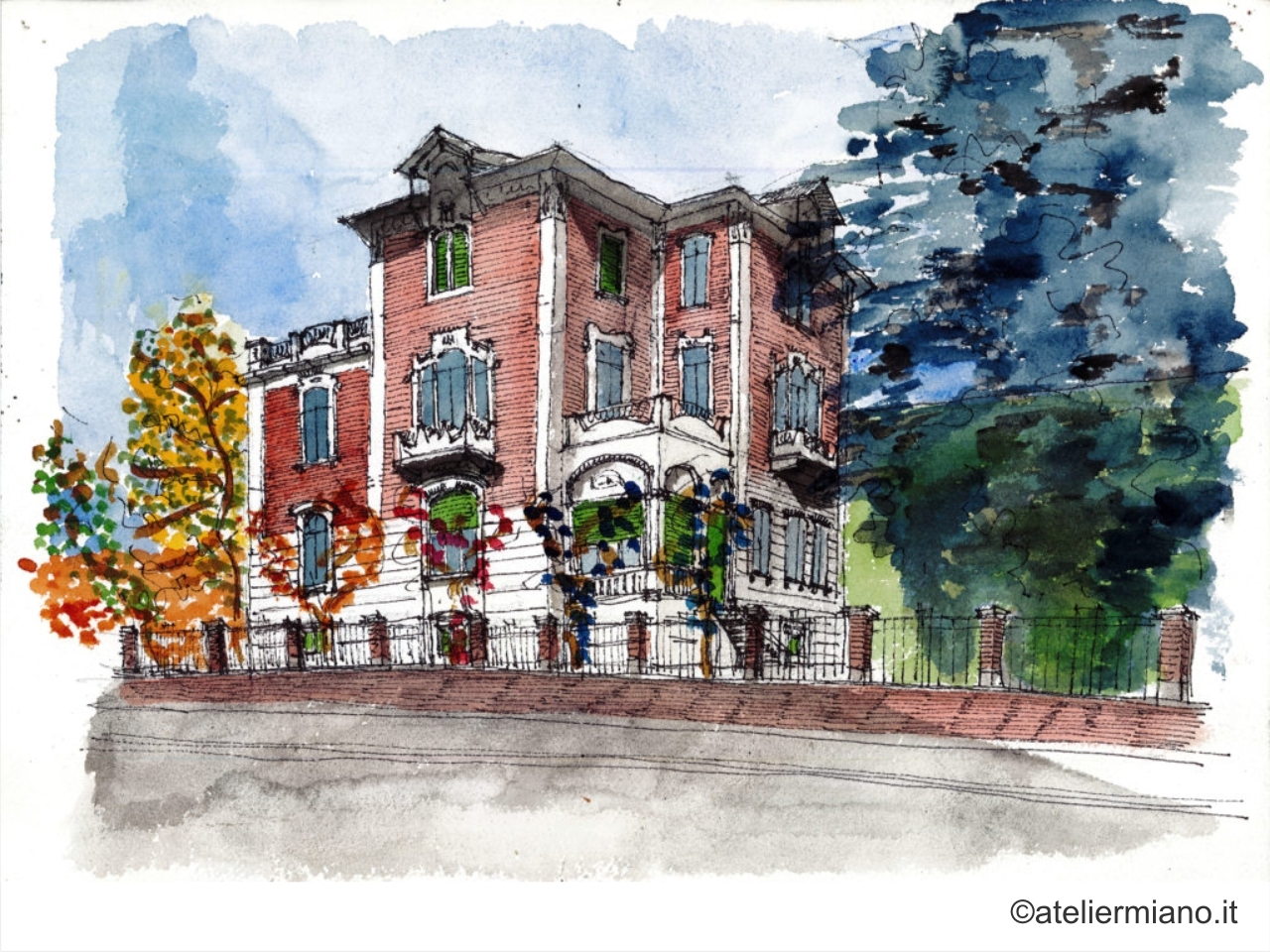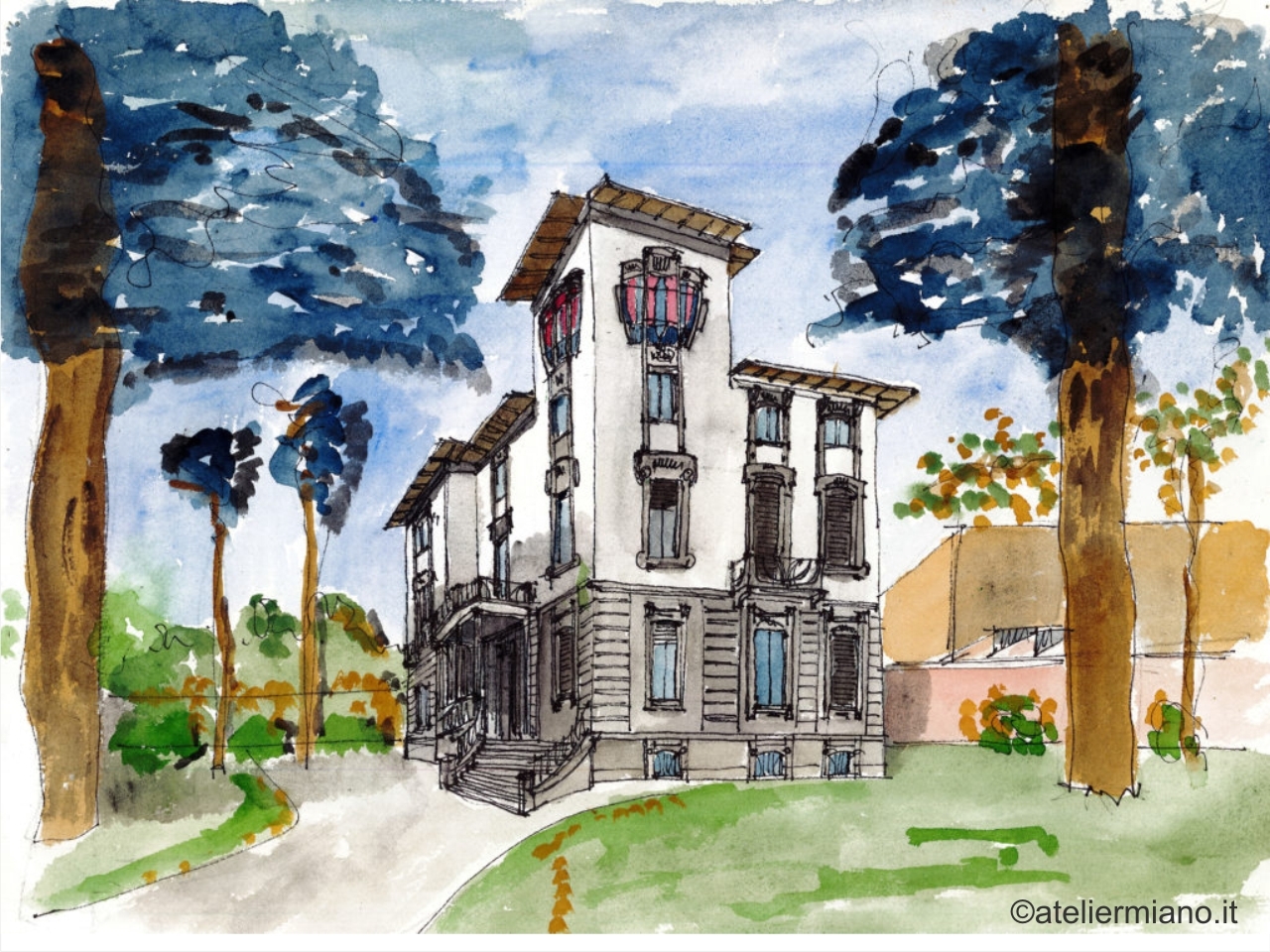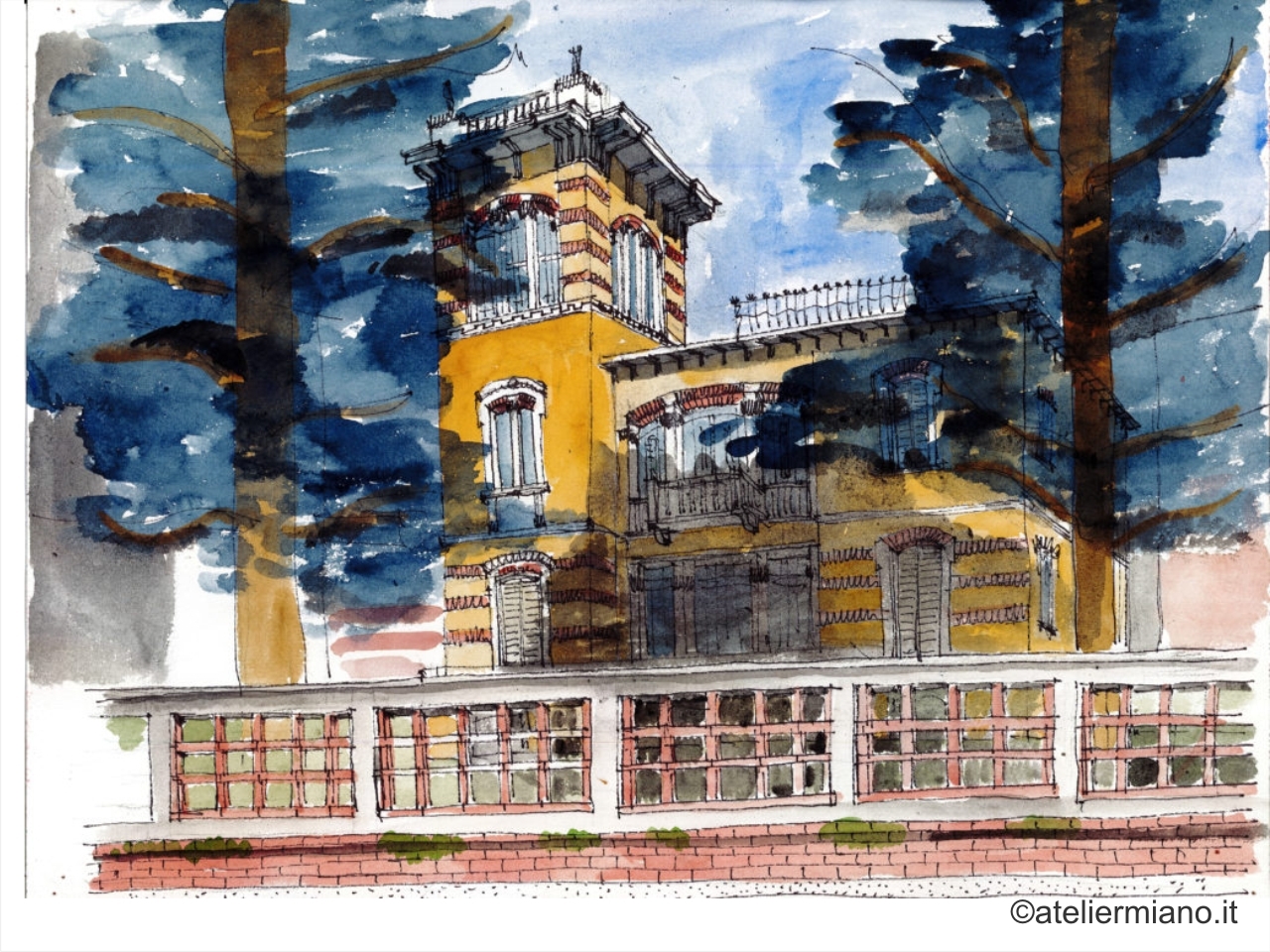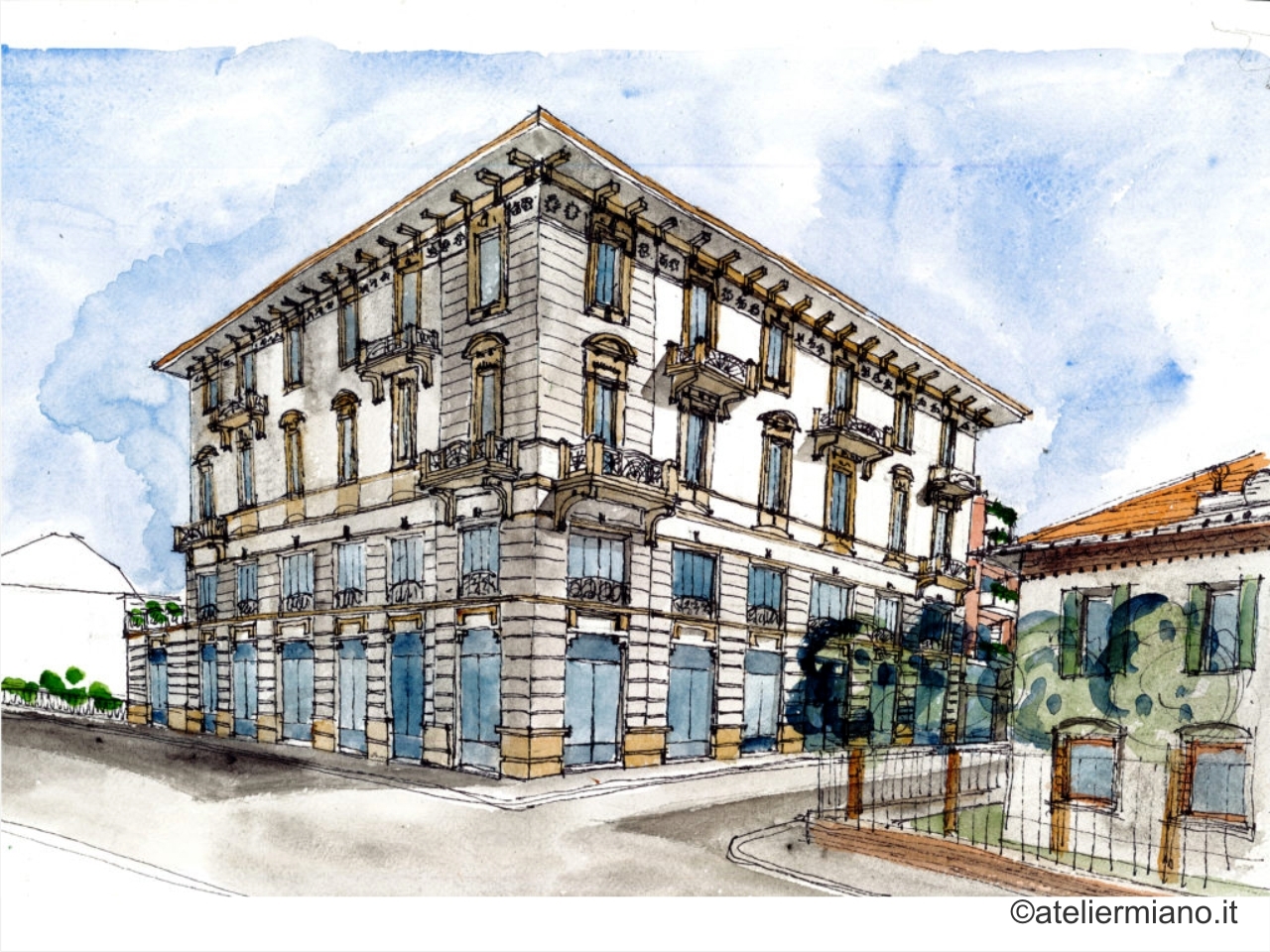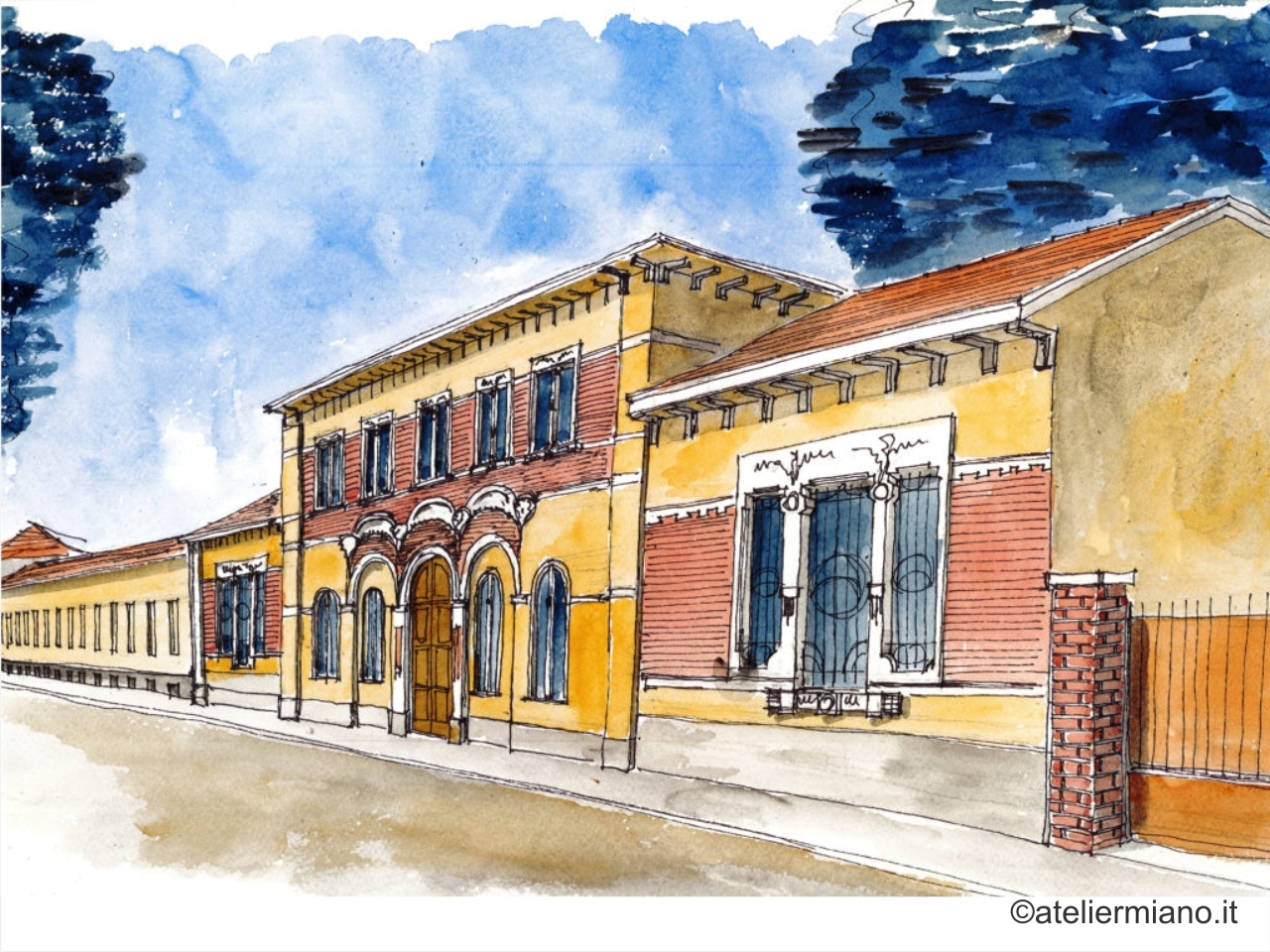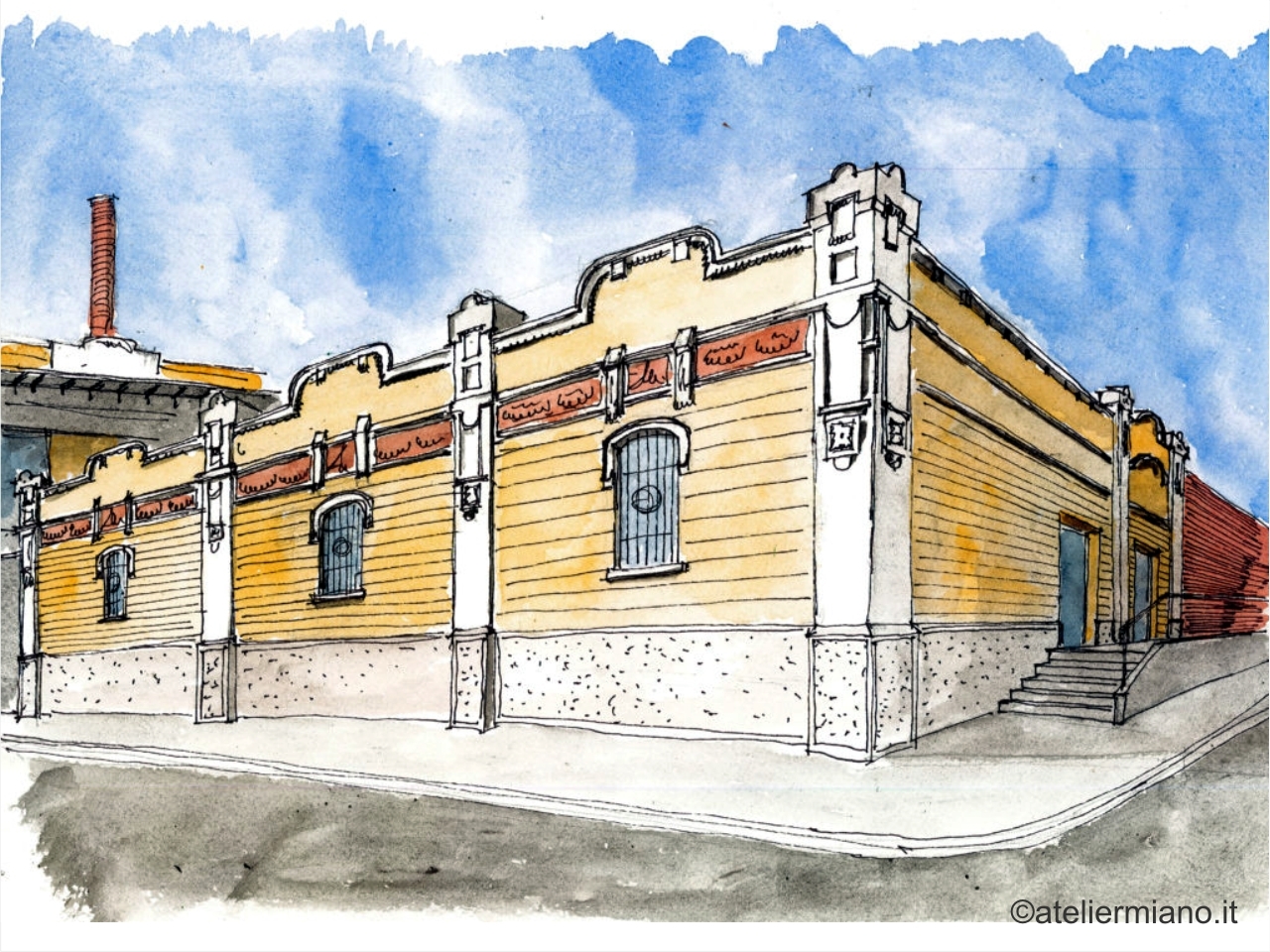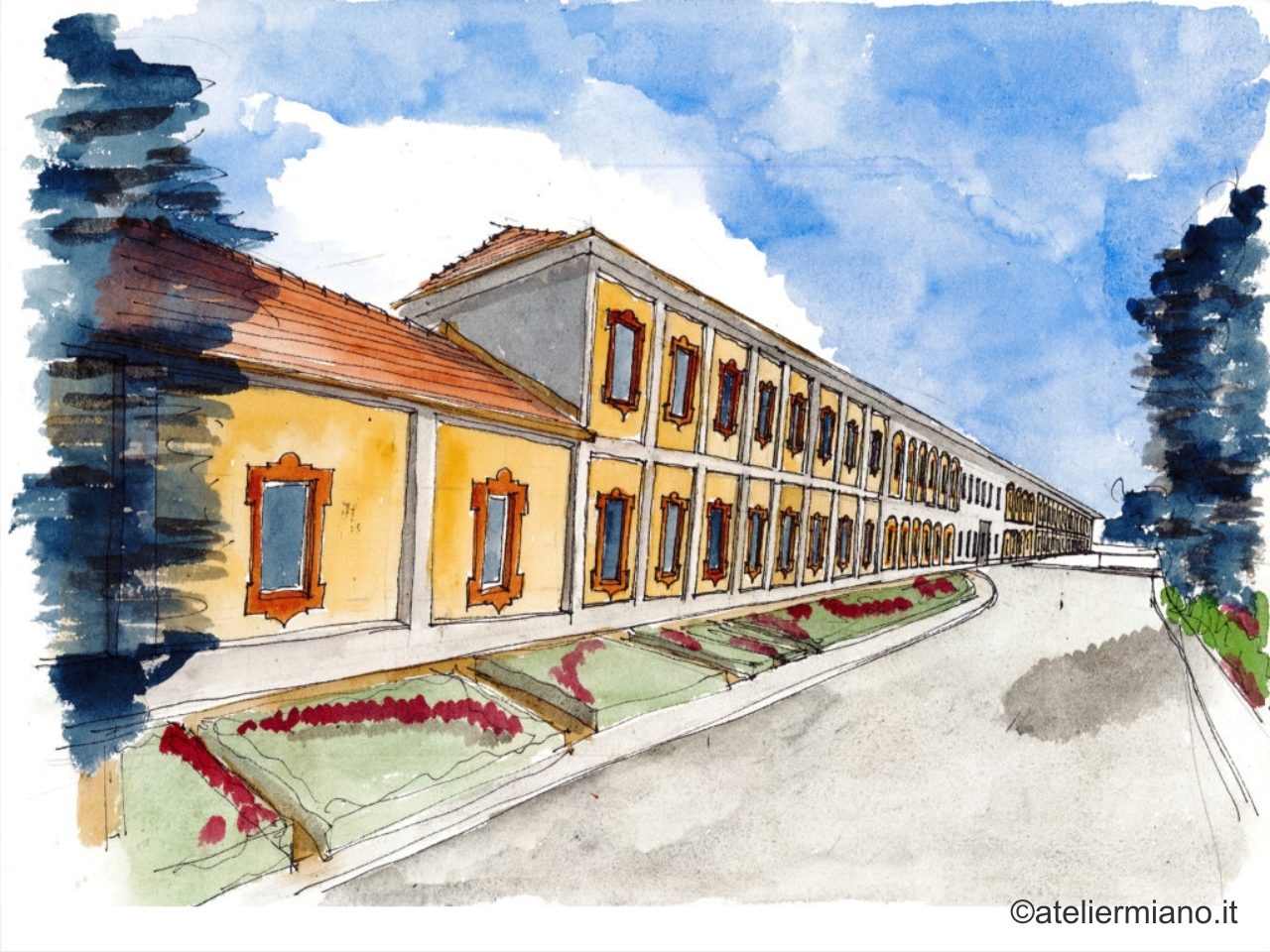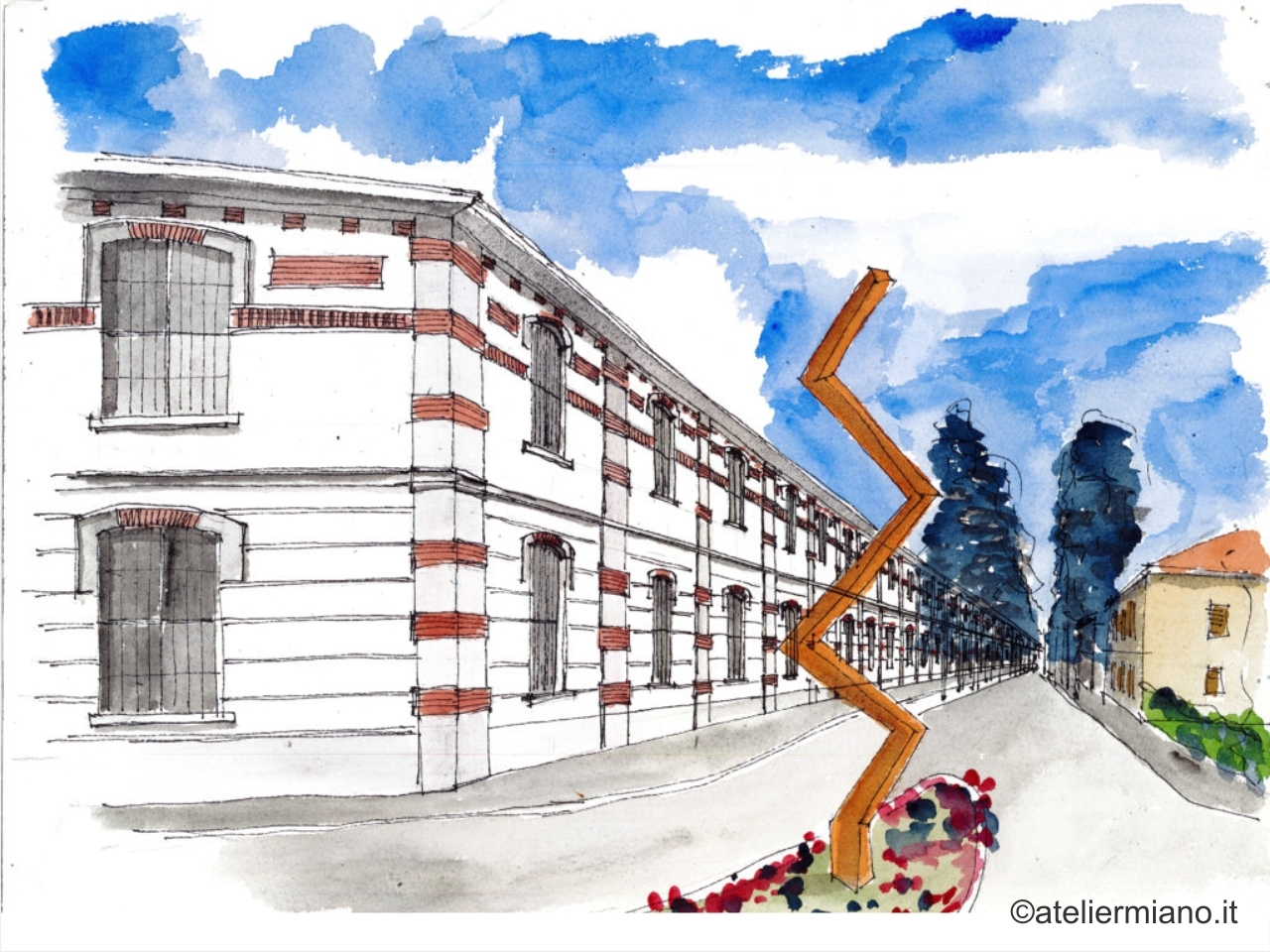Discover the history of Gallarate which dates back to ancient times and is full of charm and culture.
The origin of the name
There are several theories about the origin of the name. Since the suffix -ate is typical of Lombard toponyms of Celtic origin, it was erroneously believed that it derived from the name of the transalpine population of Gauls of the pre-Roman era who first settled there. However, more accredited studies by Pier Giuseppe Sironi carried out in the mid-1900s and supported by various historical documents, argue that the name derives more properly from the characteristics of the place.
Sironi identified connections between the place and the name which more likely derived from the word Calariate. In he Celtic language means ‘place that is near the gravel’; in fact, the current historic center of the town was the confluence area of two rivers which generated an accumulation of gravelly materials, on which the first inhabited center was built between the 2nd and 1st centuries BC.
The aspects that characterize the complexity of the city of Gallarate are numerous and varied. They include sentiment and strength, ingenuity and memory, workmanship and faith. The nine letters that make up the name will help us identify and analyze these attributes. Gioviale, Arguta, Laboriosa, Lungimirante, Antesignana, Romantica, Artistica, Temeraria, Eclettica, (meaning Jovial, Witty, Hardworking, Farsighted, Avant-guard, Romantic, Artistic, Reckless, Eclectic).
The city of the two roosters
These are the particular characteristics summarized in the coat of arms that has officially represented the so-called “city of the two roosters” since 1933. Although an inscribed stone slab on the side of the Basilica placed by the inhabitants in 1618, and a notarial document of 1673, testify to its being used since earlier times.
The divided shield coat of arms is split into two parts by a horizontal line. It depicts two roosters, red on silver or white in the upper part, and silver on red in the lower part. The rooster is crested and facing to the left, with its right foot raised ready to fight, and its beak closed, a symbol, in heraldry – the science that studies coats of arms, of a strong, courageous, vigilant and victorious warrior-like, but also enthusiastic, witty, faithful, hardworking, ambitious, intelligent, meticulous and generous town.
The coat of arms
Originally the coat of arms included a single natural rooster on a silver background and was the symbol of one of the leading families in the city, the Gallarati. Then, in the 17th century, the Municipality decided to use it as the city’s coat of arms. They made some changes in shape and colour. Also, they added a second rooster as a symbol of the courage and pride of the people who populated the city.
Finally, on the outside of the shield, there are elements of the city such as the turreted crown, formed by an open golden circle with crenellations, 5 of which are visible, all in gold and set with black. One of the two roosters also appears in the coat of arms of the province of Varese which shows its four cantons including the symbol of Gallarate along with those of the capital Varese, and Busto Arsizio and Saronno. In the photo are the two coats of arms for comparison.

Although it cannot officially be defined as a city of art, and is located outside the most famous tourist itineraries, Gallarate boasts historical testimonies of considerable artistic importance with its numerous churches, monuments and fountains, created by skilled Milanese craftsmen, but also interesting interpretations of the Art Nouveau style and architectural structures designed by internationally renowned architects.
The unique central square
The central square is unique in that it has two churches of different styles. San Pietro, a jewel of the Lombard Romanesque style with Gothic elements which has been a National Monument since 1964. Besides, the imposing Basilica of Santa Maria Assunta in neoclassical style with richly frescoed interiors, returned to its original splendor with the restoration of 2015.
With its 89-meter length, it holds the record for the largest Basilica in the province of Varese. While in Lombardy it is inferior only to the Cathedral of Milan and the Basilica of San Marco, also in Milan, and is as big as the Church of the Saints Martin and Joachim of Magenta. Following is a selection of watercolours by the Atelier Miano architecture studio depicting glimpses of the city of Gallarate. www.ateliermiano.it
Artistic treasures
Gallarate boasts many museums of considerable importance. On the one hand, there is the Museo degli Studi Patri, which, along with the other four exhibition sites, the Civic Museum of Sesto Calende, the GAM of Golasecca, the archaeological area of Monsorino and the space at the train station at Malpensa Terminal 2, collects archaeological finds from the aforementioned “Golasecca civilization”, and the Art Gallery with valuable examples of Lombard pictorial art and sculptures including work by Adolfo Wildt and Renzo Colombo. On the other, there is the MAGA Museum of Modern and Contemporary Art, one of the most important museums in Lombardy. Learn more about the artistic treasures
Cultural hub
The city became an important cultural hub as early as the mid-18th century. It reflected the cultural events and new ideas introduced by nearby large cities, especially Milan. Between the middle of the 1800s and the beginning of the 1900s, however, it developed its own cultural autonomy. This thanks to the Gallaratese industrial and intellectual class of the time who, with their work and commitment, spruced the city up. They took to heart the acculturation and increase in general well-being of its people.
The most important families, including the Ponti, Cantoni, Reina, Guenzati, Curioni, Borgomanero, Poma, Sironi, Macchi, Borghi, Rosnati and Ambrosoli, financed the construction of the new kindergarten, the elementary schools for boys and girls, the technical school and drawing school, two libraries, but also the civic hospital.
Changed cultural scene
In particular, the cultural scene changed with the inauguration of a grandiose and sumptuous theater frequented by high-ranking military, industrial and royal figures, which became, on the one hand, the fulcrum of the worldliness of the time. A testament to the city’s continued interest in music, fashion and joviality. On the other hand, the center of that romantic sentiment which was at the base of the Risorgimento in which Gallarate played a very active role.
The city also boasts the Aloisianum Jesuit University Institute for Philosophical Studies, founded in 1936 thanks to the generous donation of Countess Rosa Piantanida Bassetti Ottolini. The institute is known not only for the high level of studies that Cardinal Carlo Maria Martini, former archbishop of Milan, experienced as a young student, but also for having counted the pioneer of computer language, Father Roberto Busa, among its teachers.
In the field of technology, the “lady of the stars” Amalia Ercoli, born in 1937 in Gallarate, is also worth mentioning. Ercoli was the first woman in Italy to graduate in aeronautical engineering at the Milan Polytechnic, and dedicated most of her life to studying comets, contributing to the success of the famous Rosetta mission. Today she continues to be a source of inspiration. Learn more about the cultural aspect
Origins
Since ancient times, Gallarate has played an important role in the Upper Milan area mainly thanks to the people who were able to exploit its location along the main road system; the area north of Milan was, in fact, crossed by the via Mediolanum-Verbanus (Milan-Verbania) and the via Novaria-Comum (Novara-Como). This favored links with Milan, the lake area and neighboring Switzerland, and contributed to the significant development of the city.
The ancient Roman Mediolanum road was initially little more than a path. Then it became a mule track in the Middle Ages, a paved road under the Duchy of Milan, and finally a great Napoleonic road. The French emperor wanted a link between the Arco della Pace in Milan and the Arc de Triomphe de l’Étoile in Paris, and created the current Simplon Road. Since 1924, the city has also been traversed by the world’s first ever first motorway, the Milan-Varese.
The transport
In terms of rail transport, Gallarate also assumed considerable importance as a railway junction with the construction of its station in 1861. Today the convoys from Milan proceed to Varese, Porto Ceresio, Luino and Domodossola, and Switzerland. In 1902, the Milan-Varese route was the first in Italy to carry an electric locomotive. Given the high degree of industrialization of the area, in 1880, the Milan-Gallarate suburban tramway was instituted to connect Milan to the main municipalities of the Upper Milan area of Legnano, Busto Arsizio and Gallarate. A service which remained in operation until 1966.
In 1903, another record, the first trolleybus connection in Italy was established between Gallarate and Samarate. At the origin of the settlement of the first ancestors, the Celts and the Romans, was the need for intermediary sites that would facilitate the transfer of products over long distances. Learn more about the origins of the city.
Morphology
Gallaratesi, past and present, have also been able to forge strong bonds with the particular characteristics of their surroundings. An environment characterized by the existence of a flat area traversed by waterways, hilly areas with medium to tall trees, and a gigantic moor. For many centuries, the city depended on the main Arno river for the functioning of its workshops. But it was also afraid of the frequently occurring floods, so much so that the river was diverted several times.
In medieval times, it was diverted outside the town’s historic center following the line of the city walls. While, in later times, it was diverted further upstream. The moor, on the other hand, was transformed in the 19th century from an immense expanse of non-cultivable land into a large military district. Subsequently became the site of the first aeronautical experiments of the pioneer Caproni, which led to the birth of the current Malpensa airport. Learn more about the morphology
Economic tradition
Because the land was unsuitable for agriculture, the populations of the Gallarate area had to adapt to other activities. Over the years various nicknames were coined, testifying to the visionary attitude and vocation for commerce and entrepreneurship that characterized it. In a city where work is seen as a value, it was named the “city of porticoes” due to the business carried out under the arcades of the center during the weekly markets; “pioneers of textiles”; “city of 100 chimneys” and the “Manchester of Italy”, for the primary role played in the textile and manufacturing industries; and in general, it was referred to as the “land of pioneers”, a nod to the aeronautic and mechanical sectors.
In fact, between the end of the 19th century and the beginning of the 20th century, the area of Gallarate became one of the most intensely industrialized areas of Italy. It also boasts long-held traditions in the manufacture and trade of gold objects, and is thus an important district of Italian goldsmithing. In current times, production of all types has gradually split into small and medium-sized businesses and artisanal activities. While trade has strengthened and undergone restructuring, continuing its central role in the fashion sector. In addition to being the founding city of Missoni, which later moved to Sumirago which is also in the province of Varese, today it houses the headquarters of the underwear brands Parah and Yamamay, the Tom Ford style center and a Louis Vuitton production hub. Learn more about the economic tradition.
Ercole Ferrario
In this area, which is one of the most densely populated in Italy, each municipality is closely related to those next to it. Gallarate has always been connected to the provincial capital of Varese, to its moor and the surrounding area. However, the link with the Lombard capital Milan and the historical region of Seprio, today known as the Upper Milanese area, also remains strong.
Among the most significant figures of Gallaratese culture is a man who reflects the global vision of the city in its commercial and cultural location in Lombardy, Ercole Ferrario. Ferrario was an illustrious doctor, intellectual, pioneer and forerunner of the protection of cultural heritage and archaeological studies of the territory, philanthropist and protagonist of the Risorgimento. He promoted the need for improvements in the standard of living of peasants in a period of sudden economic development. Such as that experienced by Lombardy after the unification of Italy, arguing that the question of hygiene was intertwined with moral, intellectual and economic issues, leaving no doubt as to his farsighted vision. Learn more about Ercole Ferrario.
Bibliography
All the information listed here has been taken from papers, reports and books published on the history of Gallarate. Also, through projects promoted by the Museo degli Studi Patri and by volunteers of local promotional associations. Pro Loco, the Gruppo Archeologico del Dopolavoro Ferroviario, the Galerate Series and the Sestante photo club; but also from the students of the Liceo Viale dei Tigli and the Municipality of Gallarate.
Finally, the online local news papers www.varesenews.com, www.malpensa24.it, www.laprovinciadivarese.it, www.prealpina.it and other sites promoting local history and culture such as www.varesefocus.it, www.vareselandofturism.com, www.varesedoyoulake.it, www.gpsvarese.it, www.itinerariesapori.it, www.vareseturismo.it, www.ilvaresotto.it, www.unescovarese.it, www.varesefocus.it and www.museoweb.it to name but a few.
The anecdotes and stories they tell are the result of research and the collecting of testimonies written in books. Also, stories and annals of the intellectuals and historians of the time. In Memoirs of a Young Man! by Luigi Breganze Bossi, published in 1885, a book that also contains some interesting lithographs, in the opening words the writer addresses the reader directly, explaining the reasons that prompted him to write the book, that is, the hope of arousing deep pride in his fellow citizens and that the memories of the events narrated remain engraved in their hearts.
To this end, the author prays to Heaven to grant readers the noble gift of willpower to pursue such a valuable purpose, given that «Where there’s a will, there’s a Way!». This very aptly describes the mentality of a city projected towards the future. Nevertheless, it maintains respect for its history thanks to the people who preserve its memory.
Come to visit Gallarate!
So, what are you waiting for! If you are in Milan, take a day, or rather two, to visit this splendid city. Now that you know its fascinating history, you will be better able to appreciate it. Just half an hour by train from Milan, or a few minutes by taxi, bus or train from Malpensa airport. You will be surprised by the wonders it offers.
Soak up the extraordinary quality of life that the historic center offers. Here, you will find monuments, fountains, churches, villas, courtyards, museums, shops and numerous bars and restaurants offering Italian, Japanese, Chinese and Argentinian cuisine. Allow yourself the pleasure of slowing down and immersing yourself in good food and beautiful architecture. A truly friendly town free of the crowds of large cities.
In the following map, a walking route of about 4km has been planned for you. It starts from the train station and proceeds to a series of hidden corners, stairways, and wrought iron gates. All panoramas of Gallarate featured in the advertising campaign. By clicking on the site numbers you can access descriptions of the monuments or the buildings referenced. There are also other points of interest highlighted. The Pasticceria Pagani which offers Amaretti di Gallarate made of almond paste in elegant gift boxes with images of old Gallarate. Gelateria Il Gelatiere where you can sample the best ice cream in Gallarate.
Return to Hometown
Return to Meet the designer

